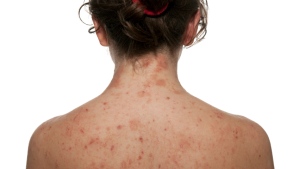Eczema on the rise in Inuit populations in Greenland and Canada

An allergy doctor in Iqaluit, the capital city of Canada’s eastern Arctic territory of Nunavut, says he’s seeing a spike in the number of allergies such as eczema and others that he’s seeing in his patients.
Dr. Antony Ham Pong, who works part-time in Iqaluit and runs an allergy clinic there, says eczema is on the rise in the city. It mainly affects Inuit, he says. And Ham Pong says that could be due to contact with non-Inuit.
He says there’s evidence more indigenous people are being born with eczema.
“In Greenland, a study showed there was a doubling of allergies in 20 years in Inuit in Greenland. So it’s not just Iqaluit or Nunavut. It’s part of the far north and that has to do with the change in our lifestyle,” he said.
He added that he’s also seeing babies from Nunavut now being born allergic to traditional food such as seal and caribou meat.




Have the doctors considered eczema might be due to climate change/warming or maybe pollutants collecting in the water or air?? Maybe the migratory sea mammels are getting too much pollutants in the areas where they migrate to and from.
I have never practiced in the circumpolar north, and there are surely factors at play which I do not pretend to understand. I imagine that access to adequate nutritious food could be part of the problem.
In New England, we call a milder form of this problem “winter skin.” Doctors (such as myself) recommend quick showering or bathing in tepid/lukewarm water, never HOT water. We suggest using soap only on parts of the body that are actually dirty or smelly, not all over the body, and even then to use just as much soap as you need and no more. Once you step out of your shower/bath, before toweling off, apply a thin coat of a bland, unscented body oil or thick lotion over all the affected areas, wait a minute, then pat dry. In really persistent cases, I will prescribe a mild steroid lotion to be used sparingly, encourage the use of thick ointments of the “Eucerin” type, and I also suggest bathing every other day instead of every day. It is rather stunning how disturbed many people are by this bathing suggestion – but most sedentary people with indoor jobs can readily freshen up with a damp washcloth on the parts of their body which are genuinely dirty or smelly. (Of course you should wash you hands and scrub your fingernails several times a day, as needed.)